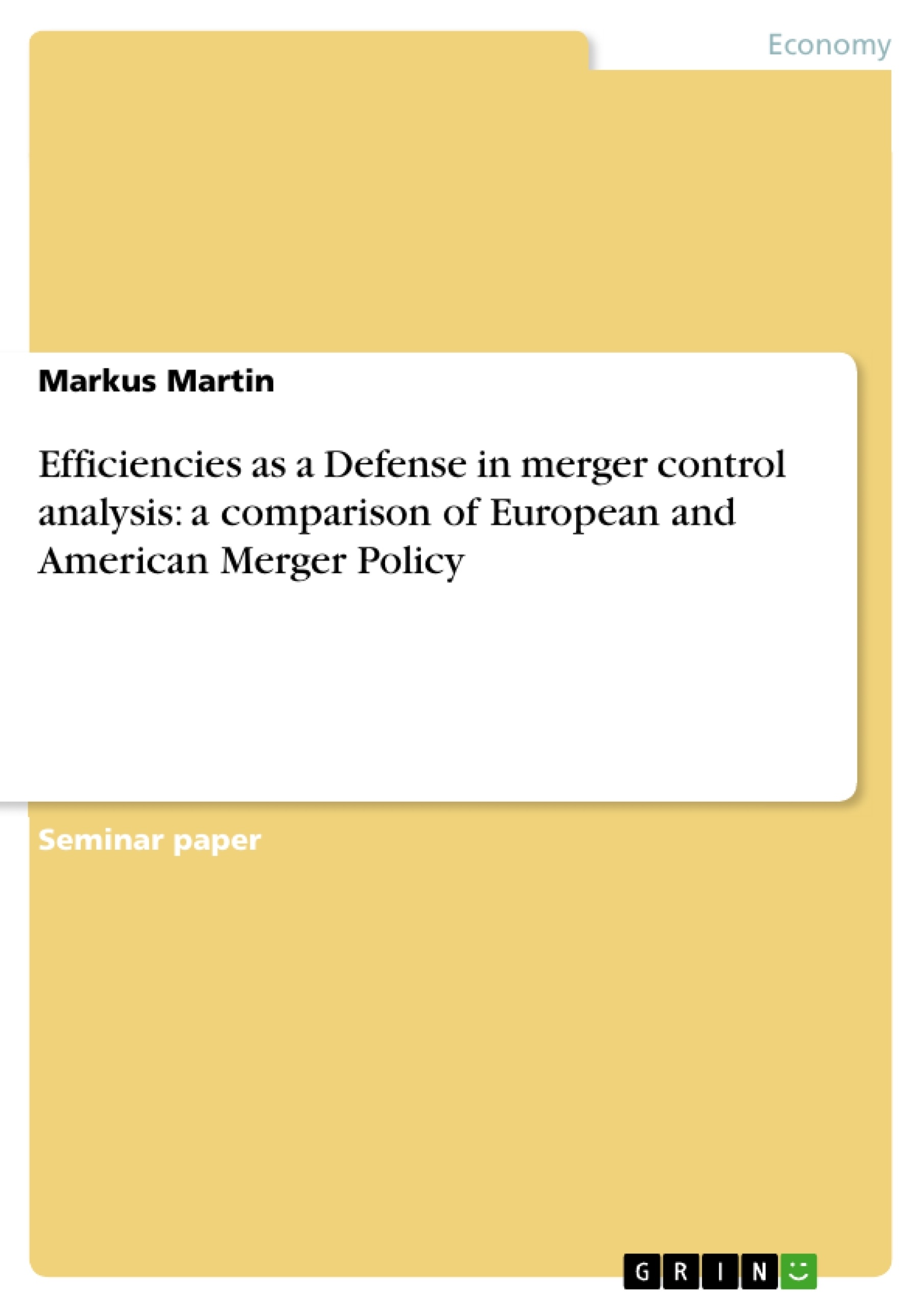Effizienzgewinne als Verteidigungsargument in Fusionskontrollverfahren. Es wird die Handhabung in den USA und Europa vergleichend dargestellt.
Inhaltsverzeichnis (Table of Contents)
- I. Introduction:
- II.) Efficiency gains and market power effects of horizontal mergers:
- 1.) Anti-competitive Effects:
- a) Market Power:
- b) Market Power and allocative efficiency:
- 2.) Efficiency Gains:
- a) Productive Efficiencies:
- b) Dynamic Efficiencies:
- c) Rationalisation:
- d) Economies of Scale and Scope:
- e) Technical Progress:
- f) Other efficiencies:
- 1.) Anti-competitive Effects:
- III.)Welfare Analysis:
- 1.) The total welfare standard:
- a) From perfect competition to monopoly:
- b) From 'partial monopoly' to monopoly:
- 2.) The Consumer Welfare standard:
- 3.) Conclusion:
- 1.) The total welfare standard:
- IV.) Merger Control in Europe and Efficiency Defence:
- 1.) Enforcement Regime in Europe:
- 2.) The E.U. approach to efficiencies:
- 3.) The reform of 2004:
- VI.) Concluding Remarks:
Zielsetzung und Themenschwerpunkte (Objectives and Key Themes)
This paper explores the complex interplay between efficiency gains and anti-competitive effects arising from horizontal mergers. The analysis aims to examine the potential benefits and drawbacks of mergers, focusing on their impact on market power and economic welfare. Key themes covered in the text include:- The potential for mergers to increase market power and restrict competition.
- The various efficiency gains that may result from mergers, such as economies of scale, scope, and technological advancements.
- The economic welfare analysis of mergers, including the total welfare standard and the consumer welfare standard.
- A comparison of merger control regimes in the European Union and the United States, highlighting the role of efficiency defenses in competition policy.
- The impact of globalization and market liberalization on merger activity and its implications for competition law.
Zusammenfassung der Kapitel (Chapter Summaries)
The introduction provides an overview of the increasing prevalence of horizontal mergers in a globalized economy, driven by factors such as market liberalization and technological advancements. It highlights the potential benefits and drawbacks of these mergers, with a focus on their impact on market power and competition. The second chapter delves into the economic effects of horizontal mergers. It explores the ways in which mergers can increase market power, leading to reduced competition and potential consumer harm. Conversely, the chapter also examines the efficiency gains that may result from mergers, including economies of scale, scope, and technological advancements. The third chapter focuses on the welfare analysis of mergers, examining the trade-off between efficiency gains and potential market power. It discusses the total welfare standard, which considers the overall impact of mergers on society, and the consumer welfare standard, which prioritizes consumer well-being. The fourth chapter examines merger control regimes in the European Union and the United States, highlighting the role of efficiency defenses in competition policy. It discusses the enforcement mechanisms used by each region and how they address the potential conflict between efficiency gains and market power.Schlüsselwörter (Keywords)
This paper focuses on the intersection of market power, efficiency gains, and horizontal mergers. Key concepts examined include:- Horizontal Mergers
- Market Power
- Competition Policy
- Efficiency Gains
- Economies of Scale and Scope
- Allocative Efficiency
- Total Welfare Standard
- Consumer Welfare Standard
- Merger Control
- European Union
- United States
Ende der Leseprobe aus 18 Seiten
- nach oben
- Arbeit zitieren
- Markus Martin (Autor:in), 2006, Efficiencies as a Defense in merger control analysis: a comparison of European and American Merger Policy, München, GRIN Verlag, https://www.grin.com/document/186506
Blick ins Buch



